AMARILLO, Texas—They call the student Maria. There’s no surname on her transcript, no grades to report her progress, no record that she’s actually enrolled. But to the people at Amarillo College, she’s very real. She is the student of today.
“We have fallen in love with a student we call Maria,” explains Amarillo’s president, Russell D. Lowery-Hart. “She’s the typical student at Amarillo College. She’s obviously female. She’s first-generation; 71 percent of our students are first generation. She goes to school part time; 60 percent of our students go to class 12 (credit) hours a year. She’s working two part-time jobs. She’s the mother of at least 1.2 kids, and she’s 28 years old.
“And she’s smart and she’s ambitious and she’s capable — and all we have to do is remove a few key barriers in order for her to live up to her potential.”
Starting nearly a decade ago and accelerating the effort since Lowery-Hart became president in 2014, Amarillo College has embraced a transformative program to blunt the dire effects of poverty on student success. Called the No Excuses Poverty Initiative, the program has brought a cultural change and sharply improved completion rates to Amarillo, a north Texas institution with just over 10,000 students.
“When I looked at our success rates, I was embarrassed,” Lowery-Hart said. “So, I asked our students what was keeping them from being successful in the classroom. As a recovering faculty member, I expected academic answers. “But what I heard changed who I am—professionally and personally—because all of the issues in the classroom had nothing to do with the classroom,” he said. “They were all life barriers that were keeping students from being successful: child care, health care, food, housing, utility payments. The things we take for granted are actually keeping students from being successful in classrooms across the country.”
Lowery-Hart said that, initially, “we thought, like a lot of people: ‘This isn’t our mission. The community is supposed to solve those problems.’ But we’re the community’s college. We had to see our mission in addressing these issues, even if that meant gluing the resources in the community together in a coherent program. We knew we had to do something.
“A majority of higher ed is set up for the students from the ‘80s,” he said. “But our communities depend on us educating the students we have, not the students we wish we had.”
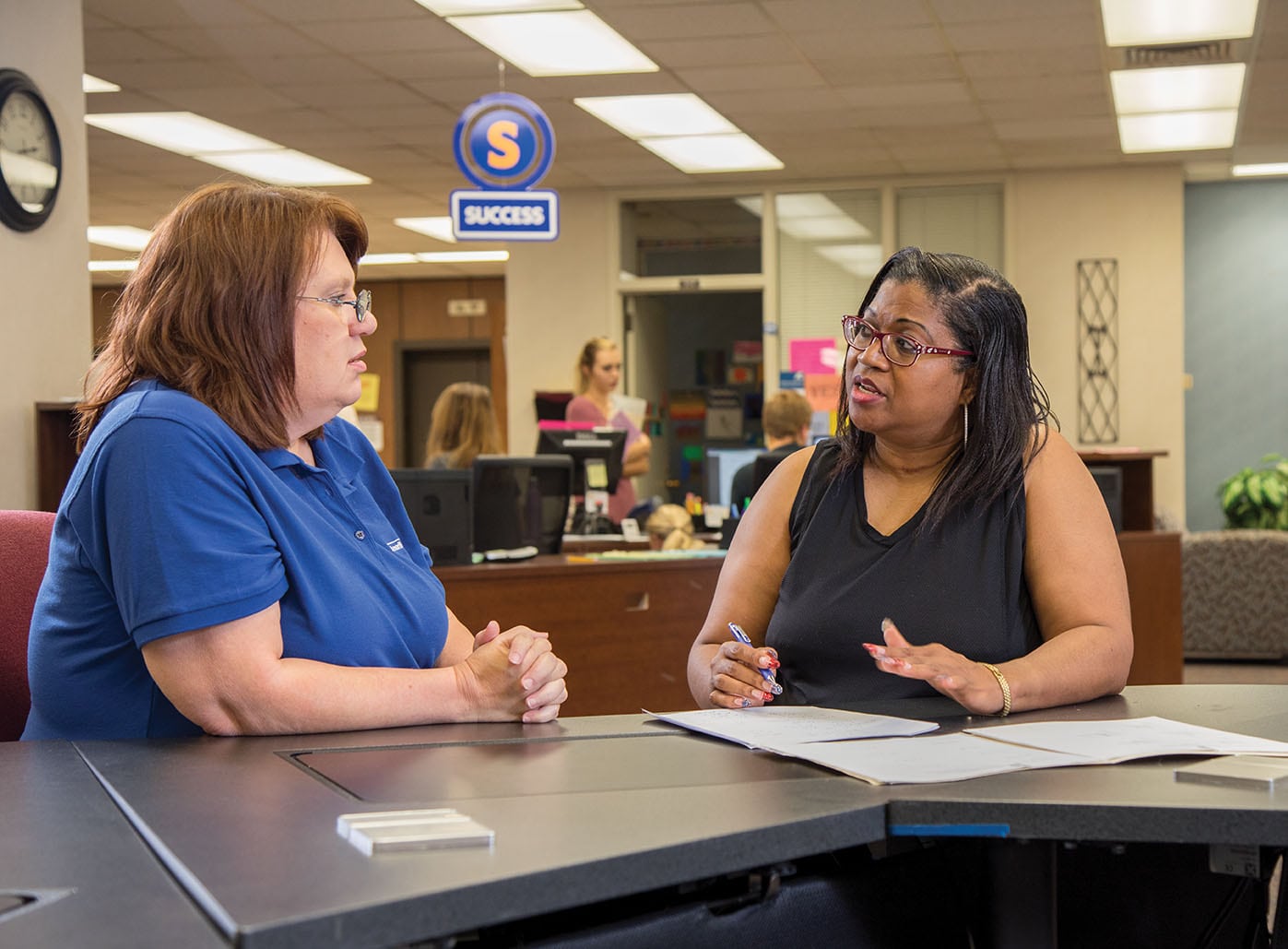
‘They really helped me’
Delores McMurry was a student in the 1980s, attending a private business school. It didn’t work out, and the school has since closed. So she went to work, often holding down two and sometimes three jobs as she raised three daughters and a son. He died five years ago.
McMurry grew frustrated at one job at a distribution center when people she trained were promoted but she wasn’t.
“Everybody they were promoting over me had a degree,” she said. “They said they didn’t promote me because I didn’t have a degree.”
To change that, and to try to serve as a role model to her children and grandchildren, McMurry decided to return to school, enrolling at Amarillo College in 2015. It hasn’t been easy. She still has to work, by day in a variety of jobs and by night serving as a hostess at a bingo hall.
Now 51 years old, she earned a certificate in business last December and has just two classes remaining to complete her associate degree in business, which she expects to receive in December 2018.
But McMurry admits she couldn’t have come this far without special help from the college. Three times, she needed help with a month’s rent; Amarillo College provided it. She was having trouble paying for textbooks; the college arranged for her to take books out on loan. She also took advantage of Amarillo’s counseling and tutoring programs. And when her grades were so good that she was asked to join Phi Beta Kappa, the college helped with the cost of that, too.
“The people I’ve interacted with here are wonderful,” McMurry said. “The times I thought I was going to lose my mind, that’s when I ran into Jordan (Herrera) and the rest of her crew, and they actually helped pull me through. They really helped me through some days when I really thought I could not be here.”
Jordan Herrera, Amarillo’s director of social services and a master’s level social worker, runs the college’s Advocacy and Resource Center. The center, which opened in 2016, is housed in a building right in the middle of the Amarillo College campus just southwest of downtown Amarillo, a Panhandle city with a population just under 200,000.
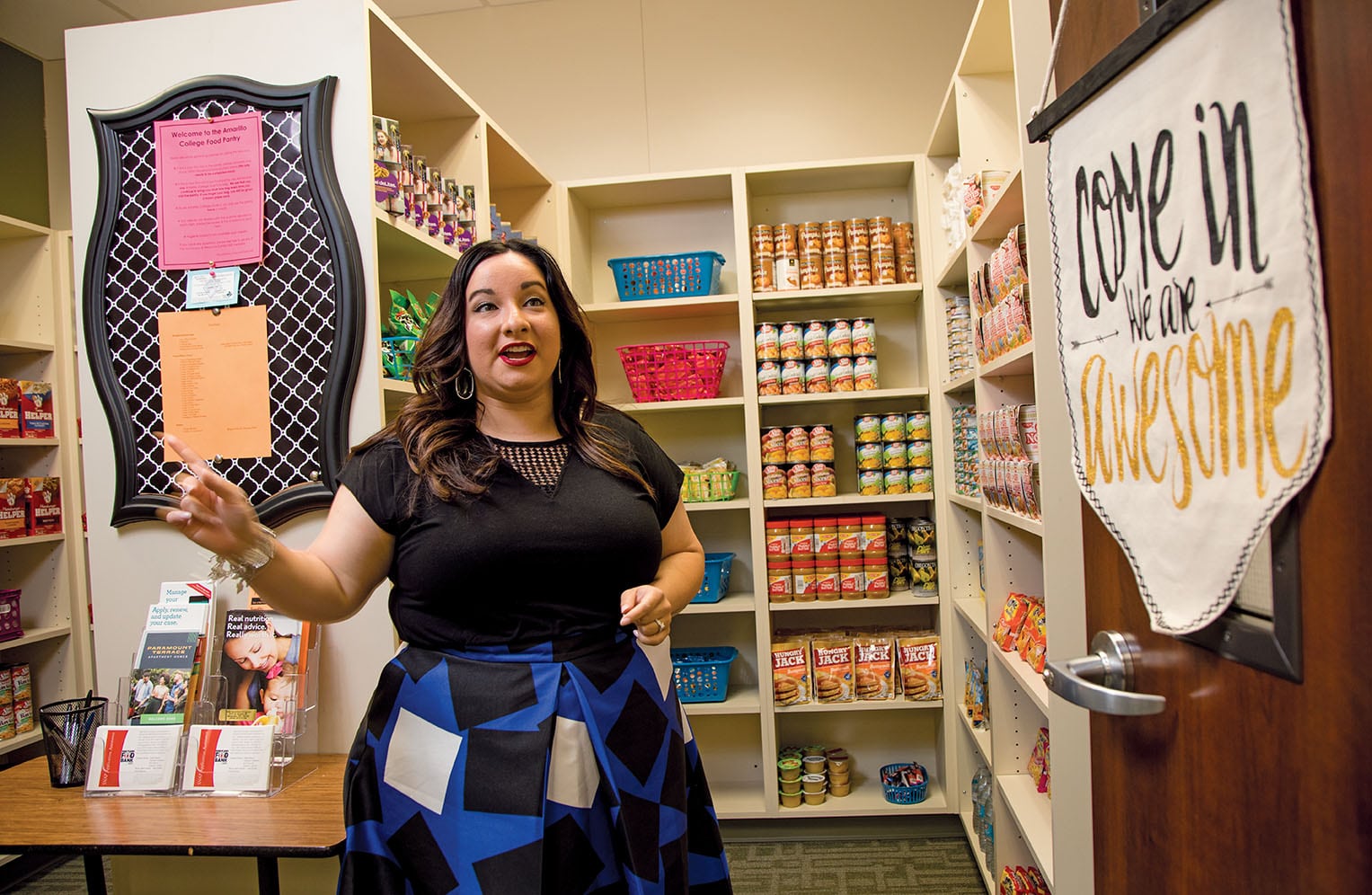
help students with rent, utility bills, child-care expenses, transportation, and legal services.
“All of our services are available to help students when they are experiencing life barriers,” Herrera said. “We are able to assist beyond tuition, books, and fees.”
Herrera can walk out of her office and into a food pantry in an adjoining room. There’s also a clothes closet, with suits and business clothes for students who are going to job interviews, and more casual clothing for everyday wear. Toiletries are also available, and soon supplies for babies will be offered.
Herrera and her team also find ways to help students with rent, utility bills, child-care expenses, transportation, and legal services. The school has dental and legal clinics, where students train while also assisting fellow students. A car repair clinic will open soon.
The Amarillo College Foundation now contributes $60,000 to support the center’s programs, and local businesses have partnered with the center to help with things such as bulk purchases for the food bank.
Herrera said the center served 5 percent of the student population in 2016. By the fall of 2017, the number had risen to 18 percent.
“If you treat the students with dignity and respect, they are comfortable coming in to ask for help,” she said.
‘I was at a crossroads’
Michael London knew he needed help. He just wasn’t sure he could ask.
The son of a fiercely independent father who immigrated from Trinidad and Tobago, London remembered his father’s advice: “You don’t need help from nobody. Do it on your own.”
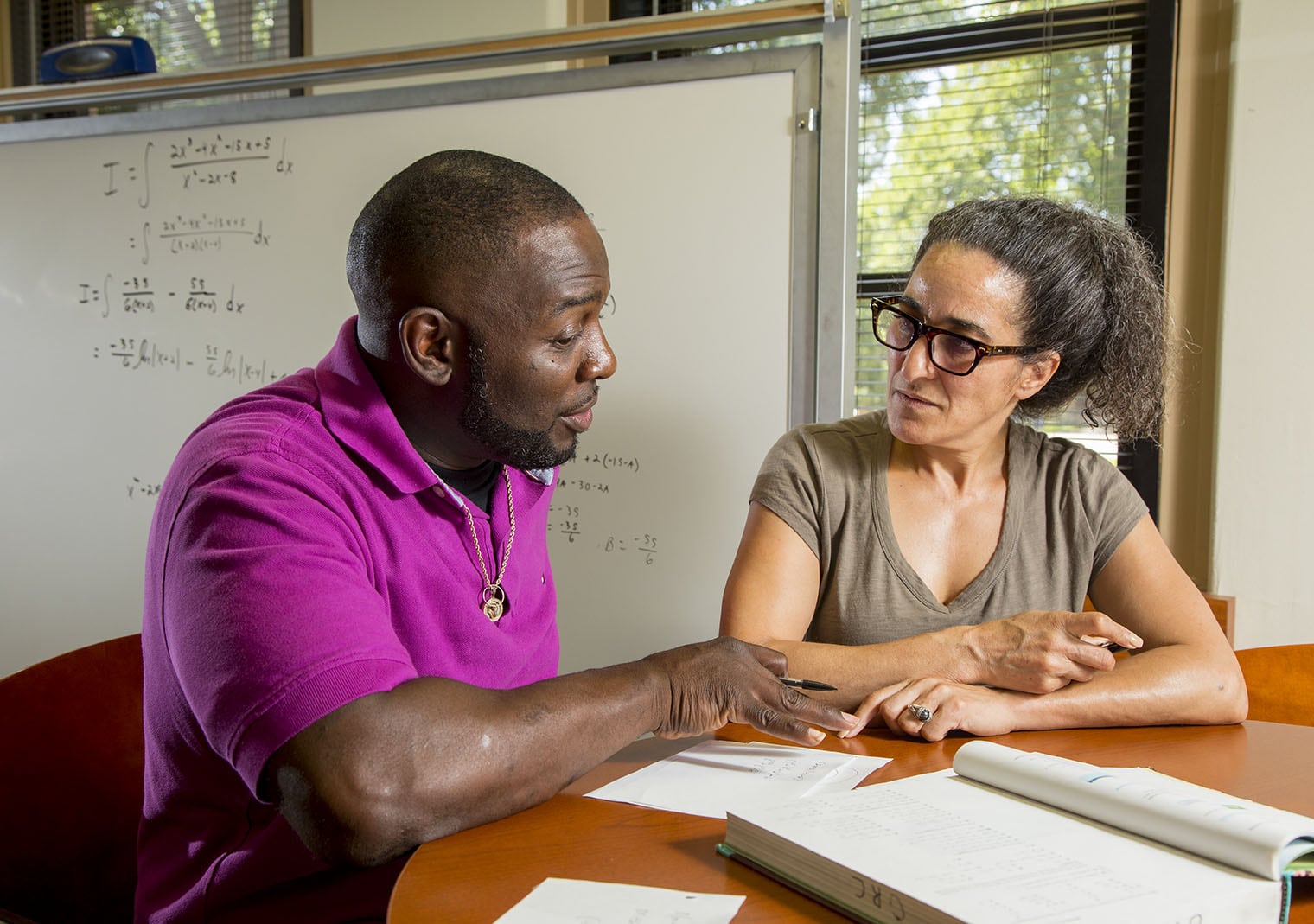
“I didn’t grow up asking for help,” London said. “My dad has been on his own since he was 14, living in a whole other country. He never would ask for help. We don’t do that. It’s not in our culture.”
A Brooklyn, N.Y., native who moved to Texas to work at his father’s auto body shop, London followed that go-it-alone path for many years. And often, it didn’t go well.
He says he was involved in gang fights, ran with the wrong crowd, dealt drugs, was shot, and served time in prison—not once, but three times—for possession of stolen property and parole violations.
After being released from prison the last time, in 2009, London decided a change in scene might be good. He moved to the Amarillo area.
“I had tried everything else, so I thought: ‘Let’s do a geographical change,’” he said.
He got a job at a food-processing plant about 40 minutes outside Amarillo, and soon met a woman who drove a bus ferrying workers to the city. He and the woman, Nicole Evans, the mother of three children, have been together ever since. They were married in 2014.
“She was encouraging me to do something different,” London said, so he decided to go back to school. He had earned his GED while serving his last term in prison and enrolled at Amarillo College in 2016. Initially, London worked for a company that helped pay for his college. When he lost that job, he faced a dilemma: school or work. He chose to continue his education.
“I was at a crossroads: either work or go to school,” London recalled. “I said ‘I’m going to school,’ but I was scared. It was like: ‘How am I going to pay my bills?’”
That’s when Amarillo College’s resource center helped out, the first of several times. First, he needed help with a utility bill. Later, he received assistance with groceries, books, and toiletries.
“It was hard for me to ask, but it wasn’t about me anymore,” London said. “I had a family. I had to push pride aside.
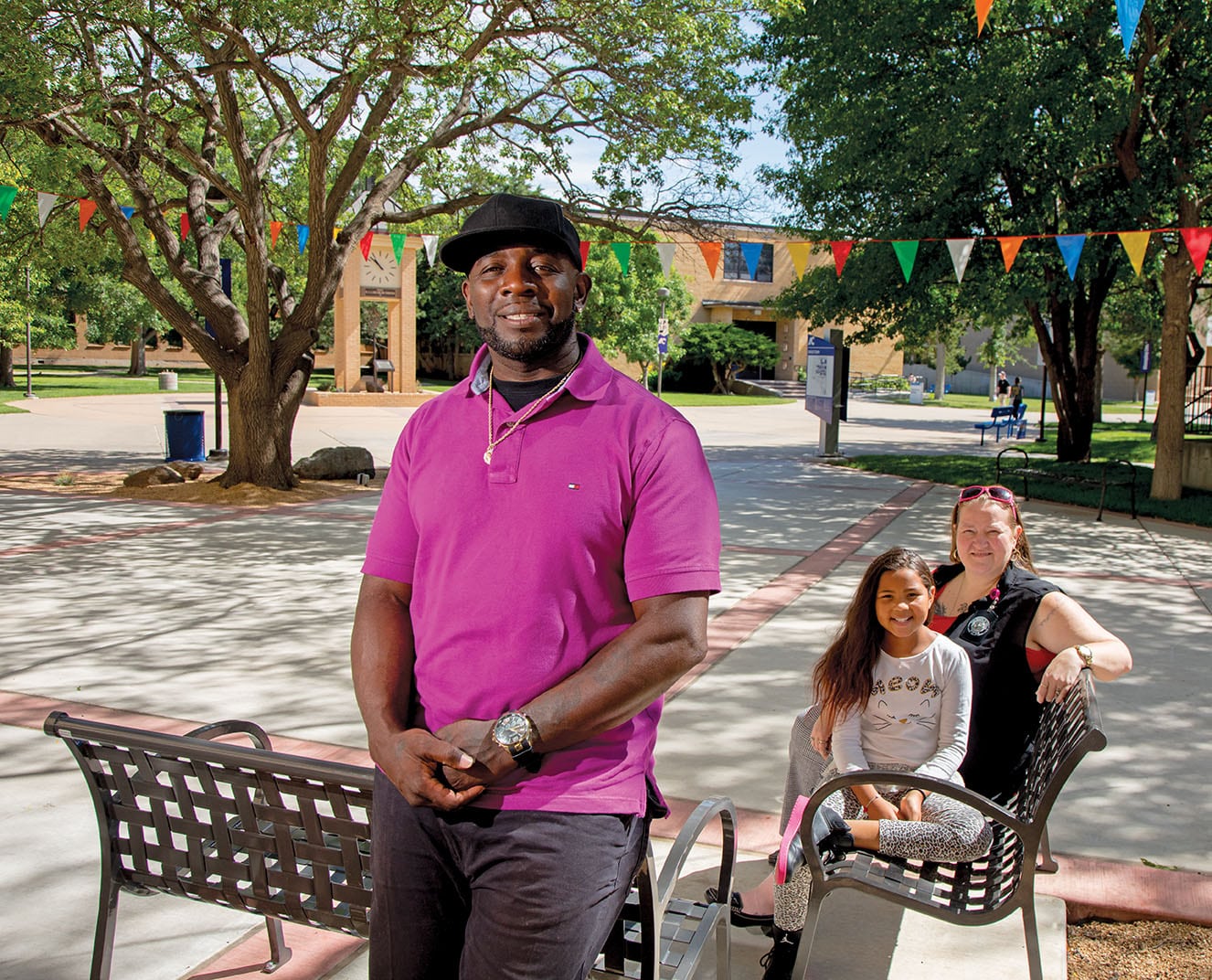
“The people at Amarillo made me feel comfortable. They were helping me because they wanted me to finish.”
He earned his associate degree in business entrepreneurship in May and plans to take a course to get a commercial driver’s license this fall. He’s also considering enrolling at West Texas A&M University for further business studies.
London now has a business operating an event venue for parties and receptions, but his longer-term goal is to own his own transportation company.
In short, London has turned his life around. He’s 45 years old, he has a degree, he has plans for the future, and he recently learned that he and Nicole are expecting a child in March.
He often uses the term “process” to describe his long, circuitous route to earning a college degree. And he knows the process isn’t over.
“I still carry around with me today a sign that says ‘still under construction,’” he said. “Until I leave this planet Earth, I will be under construction,” he said. “It’s a continuous thing every day, being worked on, making a difference—not only for myself, but possibly someone else.”
‘This is what we can do’
Edward Peña has followed a more traditional path to college. He went directly from high school to college, thanks in part to a scholarship provided by Dumas (Texas) High School to a graduate who enrolls at Amarillo College. The scholarship paid for Peña’s spring and fall classes for two years, but it didn’t cover the summer courses he wanted to take. He paid for those.
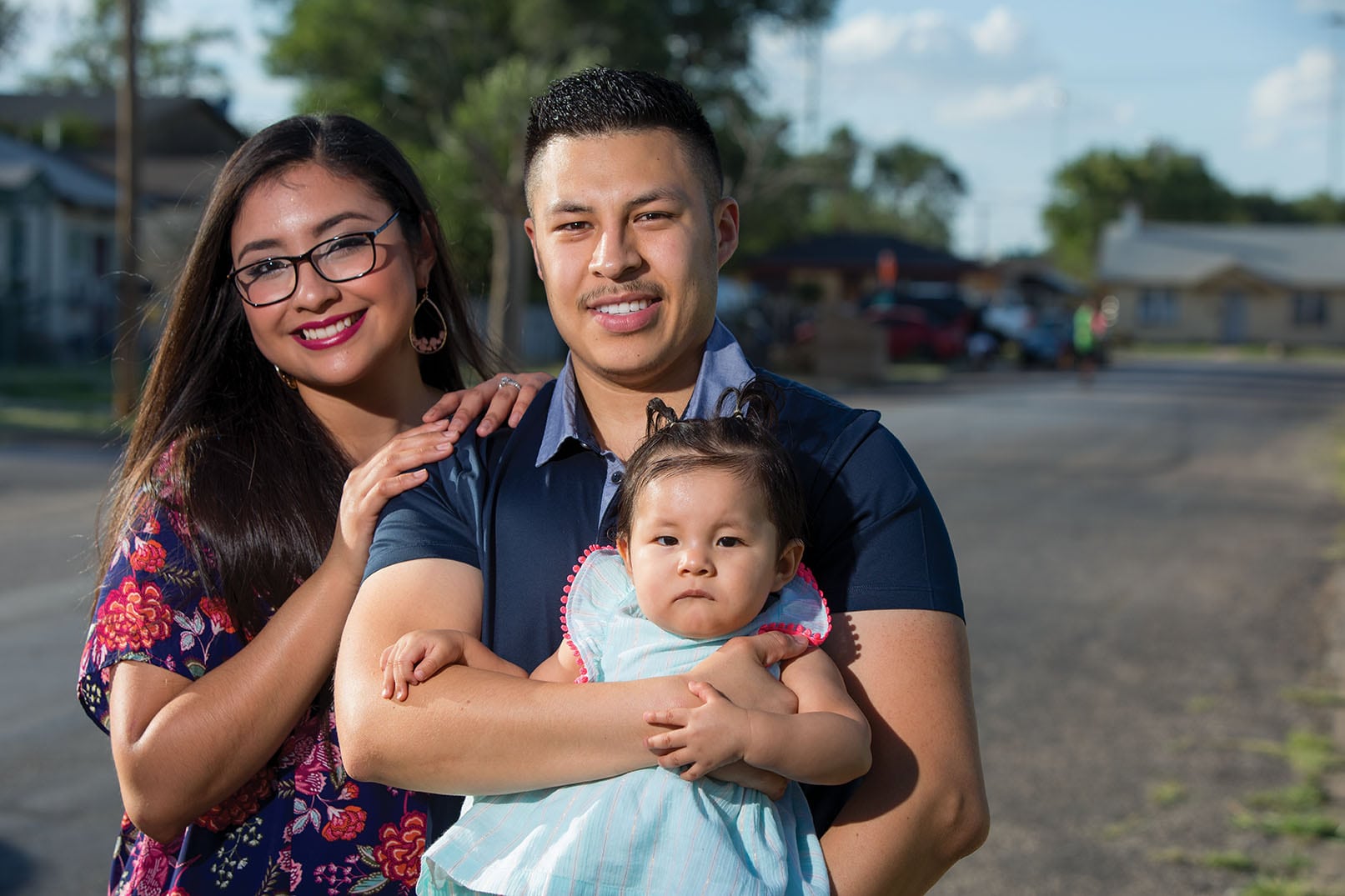
A nursing student, Peña met his fiancée, Laura Torres, in a study group during their first year of college. Both were good students, moving on schedule through the first two stages of the nursing program. However, as they progressed to the more intensive third level of the program, they needed to move from Dumas to Amarillo to eliminate the time-consuming commute of 40 miles each way.
That’s when they sought help from Amarillo College. Peña talked to a counselor, who then got in touch with Jordan Herrera. She worked with Catholic Charities in Amarillo to find affordable housing for the couple.
“Then, it was literally the same day that she (Herrera) sent me an email saying, ‘This is what we can do,’” Peña recalled. “Jordan helped me right away. They were able to pay the first month’s rent or the deposit, whichever was more helpful for us—which was the first month’s rent. It was pretty quickly that everything fell into place.”
Without that housing assistance, Peña said, he likely would have dropped out of school. As with many low-income students, a single financial obstacle can derail an entire college career.
“Being the man of the house, I have to provide for my family, so I would probably have had to stop the program,” Peña said. “I probably would have had to drop out of nursing school and just start working until Laura finished the program.”
The couple faced new financial challenges after the birth of their daughter, Ximena, in December 2017.
Herrera found ways to help the couple overcome those obstacles, too. She helped them apply for federal Carl Perkins grants—one to assist with Torres’ transportation costs, and another to help Peña defray child-care expenses. The school’s student support services department also has helped by providing services such as free printing of classroom resource material, Peña said.

Now, both Peña and Torres are on track to complete the registered nursing program in December 2018. They hope then to take some summer pre-med courses with a goal of attending medical school. None of that would have been possible without that initial rent payment, Peña said.
“That first month’s rent helped us tremendously,” he said. “It helped us have a roof over our heads, and that helped us keep going to finish faster and to accomplish our goals.
“The people here were helping us, and once we are done, we really want to help other people succeed,” Peña said.
‘Uncover the why’
President Lowery-Hart believes Amarillo College has come a long way in understanding the steep challenges that students often face.
“For me, the most powerful thing we can do at Amarillo College—and any higher education entity—is to uncover the why. If you uncover the why, you’ll figure out the what,” he said.
“We have to understand why students make the decisions they make, face the barriers they face and why they are or are not successful. Once we understood why they weren’t successful, we could build the what: which was systemic social service interventions with wraparound support.”
Now, four years into the project, there’s strong evidence it’s working, he said.
“When we first started these conversations, our completion rates were in the teens,” he said. “Now, our three-year completion rates are 45 percent. We can celebrate those, but our goal is to be at 70 percent by 2020.
“People thought we were crazy stating that goal, but no one thought we’d be at 45 percent,” he said. “When you love the students you have rather than the students you wish you had, and when you build your college around their needs, you can actually ensure that they complete what they’ve started. We’re doing that at Amarillo College.”
